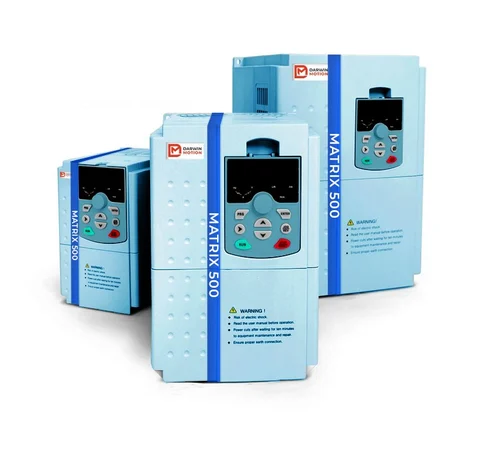Posted on 18th Jan 2024

Installing, setting up, and troubleshooting a Variable Frequency Drive (VFD) involves several steps to ensure proper functionality and safe operation. Here's a general guide that covers the key aspects. Keep in mind that specific details may vary based on the manufacturer and model of the VFD, so always refer to the Darwin Motion VFD manufacturers documentation for the most accurate information.
Always start by thoroughly reading the manufacturer's installation manual. It contains critical information specific to your VFD model.
Ensure that power is disconnected before starting any work.
Follow proper lockout/tagout procedures.
Use appropriate personal protective equipment (PPE).
Install the VFD in a clean, dry, and well-ventilated environment.
Ensure proper clearance for cooling and follow any specified temperature limits.
Follow the manufacturer's guidelines for wiring connections.
Use appropriately sized cables for power and control wiring.
Secure all connections to prevent vibration-induced issues.
Establish a proper grounding system as per local electrical codes.
Connect the VFD's grounding terminal to the main grounding point.
Connect the motor according to the VFD manual and motor nameplate specifications.
Verify the motor data, such as voltage and current, aligns with the VFD settings.
Gradually apply power to the VFD in the prescribed sequence mentioned in the manual.
Monitor for any abnormal sounds, smells, or visual indicators.
Access the VFD programming interface as per the manual.
Set parameters like motor parameters, acceleration/deceleration times, and maximum frequency.
Many VFDs have auto-tuning features. Follow the instructions to automatically tune the VFD to the connected motor.
Choose the appropriate control method (e.g., V/F control, vector control) based on your application requirements.
Configure fault settings and protection features to ensure the VFD responds appropriately to abnormal conditions.
If the VFD supports communication interfaces, set up any required communication protocols.
Conduct a test run at low frequencies and gradually increase to full speed.
Monitor for any abnormalities and ensure the motor runs smoothly.
Verify that the VFD is receiving the correct power supply within specified limits.
Check the VFD display or interface for any fault codes.
Refer to the manual for guidance on interpreting and addressing these codes.
Inspect the motor for any mechanical issues or anomalies.
Ensure the motor parameters in the VFD match the motor nameplate.
Recheck the grounding system to ensure it is proper and meets safety standards.
Inspect all cable connections for tightness and proper termination.
Consider environmental factors such as temperature and humidity that may affect VFD performance.
If issues persist, contact the VFD manufacturer's technical support for assistance.
Remember, this is a general guide, and specific VFD models such as Darwin Motion offers Micro Drive- Matrix 900, DR Matrix 350 / Solar VFD Drive, High Frequency Drive - DR Matrix 500, High Performance Drive - DR Matrix 680, Regenerative Drive - DR Matrix 880 which may have unique requirements. Always refer to the manufacturer's documentation for accurate and model-specific information.